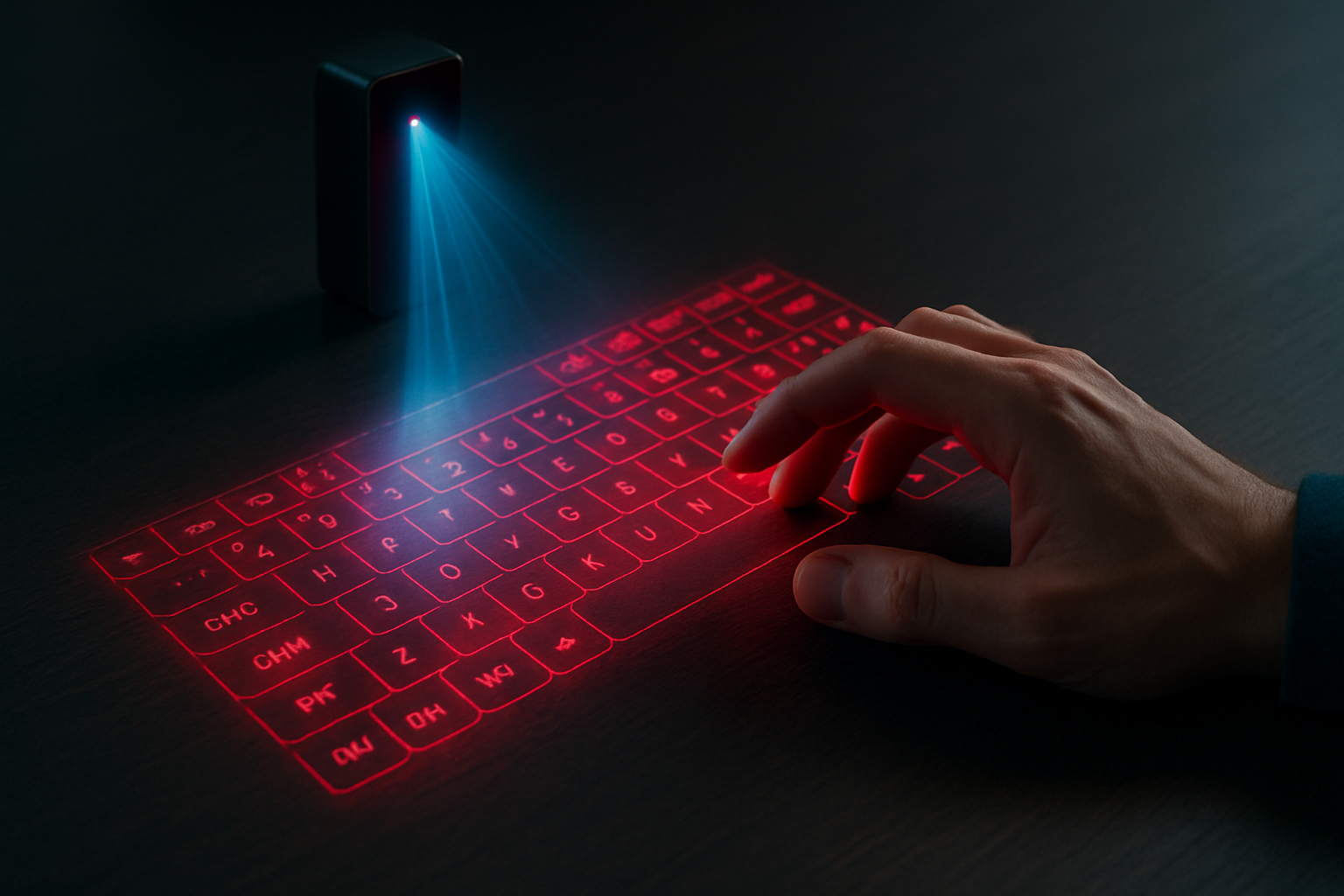Holographic Keyboards: Typing in Thin Air
In an era where technology continues to blur the lines between science fiction and reality, holographic keyboards are emerging as a futuristic interface that could revolutionize how we interact with our devices. These ethereal input methods project a virtual keyboard onto any flat surface, allowing users to type without physical keys. As we delve into this cutting-edge technology, we'll explore its potential to reshape our digital interactions and the challenges it faces in becoming a mainstream input device.

The concept relies on a combination of laser projection and infrared sensing. A tiny projector beams the image of a keyboard onto a flat surface, while an infrared light creates a plane just above the projected image. When a user’s fingers break this plane, cameras detect the position and translate it into keystrokes.
Current State of the Technology
Today’s holographic keyboards have come a long way from their clunky predecessors. Companies like Celluon and Serafim have developed compact devices that can connect to smartphones, tablets, and laptops via Bluetooth. These modern iterations boast improved accuracy and responsiveness, making them viable alternatives to traditional keyboards in certain scenarios.
The latest models feature customizable layouts, multi-language support, and even gesture controls. Some can project onto any flat surface, from a desk to a airplane tray table, offering unparalleled portability and flexibility.
The Promise of Holographic Input
Holographic keyboards offer several potential advantages over their physical counterparts. Their lack of moving parts means they’re less susceptible to wear and tear, and they’re impervious to spills and dust—a significant benefit in harsh environments. The ability to project onto any surface also makes them incredibly space-efficient, ideal for use with mobile devices or in cramped workspaces.
Moreover, the technology opens up new possibilities for accessibility. Users with limited mobility or those who struggle with traditional keyboards might find holographic alternatives easier to use, as they can be customized in size and layout to suit individual needs.
Challenges and Limitations
Despite their futuristic appeal, holographic keyboards face several hurdles on their path to widespread adoption. The lack of tactile feedback is a significant issue for touch typists who rely on the feel of physical keys. While some devices attempt to simulate this with vibration or sound, it’s not quite the same as pressing a real key.
Accuracy remains another concern. While modern holographic keyboards have improved significantly, they still can’t match the precision of physical keyboards, especially in less-than-ideal lighting conditions or on uneven surfaces.
Battery life is also a consideration, as the constant projection and sensing require a fair amount of power. This can be particularly problematic for mobile users who need to conserve their device’s battery.
The Future of Holographic Input
As the technology continues to evolve, we can expect to see holographic keyboards become more accurate, energy-efficient, and user-friendly. Research into haptic feedback systems could address the lack of tactile response, while advancements in projection technology may allow for clearer, more visible keyboards in various lighting conditions.
The integration of holographic keyboards with augmented reality (AR) systems is another exciting prospect. Imagine typing on a virtual keyboard that only you can see through AR glasses, or interacting with holographic interfaces that extend beyond simple text input.
Market Impact and Pricing
Currently, holographic keyboards occupy a niche market, with prices ranging from $100 to $200 for consumer models. As the technology improves and production scales up, we could see prices drop, making them more accessible to the average consumer.
The global market for alternative input devices, including holographic keyboards, is projected to grow significantly in the coming years. However, it’s unlikely that they’ll completely replace physical keyboards in the near future. Instead, they’re more likely to carve out a niche in mobile computing and specialized applications where their unique advantages shine.
In conclusion, holographic keyboards represent a fascinating glimpse into the future of human-computer interaction. While they still have some way to go before they can fully compete with traditional input methods, their potential to offer new levels of portability and flexibility is undeniable. As the technology continues to mature, we may find ourselves increasingly typing on beams of light rather than physical keys, bringing us one step closer to the seamless, integrated digital world of tomorrow.




